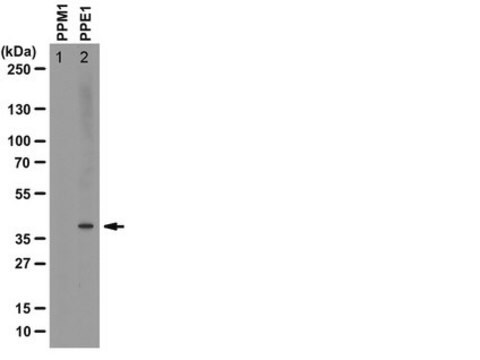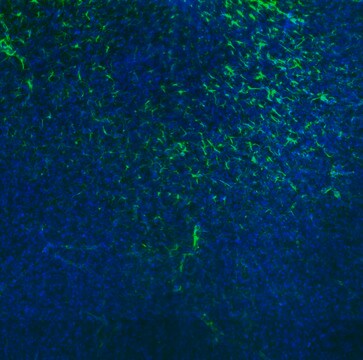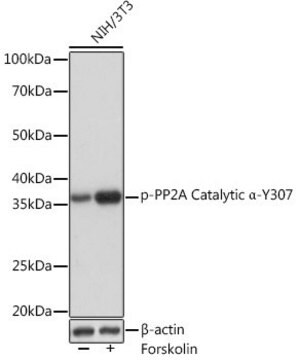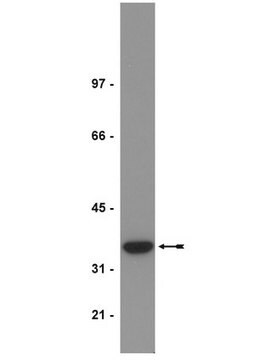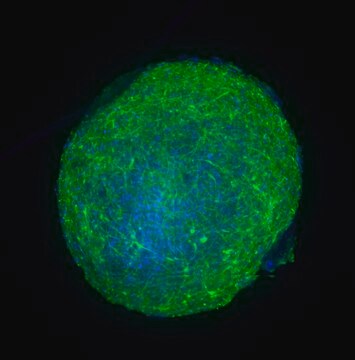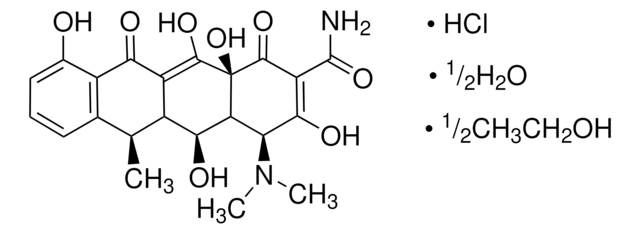詳細
Serine/threonine-protein phosphatase 2A catalytic subunit alpha isoform (UniProt: P67775; also known as EC:3.1.3.16, PP2A-alpha, Replication protein C, RP-C) is encoded by the PPP2CA gene (Gene ID: 5515) in human. Protein phosphatase 2A (PP2A) is a ubiquitously expressed enzyme that contributes 0.3 to 1% of the total cellular protein in the mammalian cell and regulates various functions by dephosphorylating many critical molecules, such as Akt, p53, c-Myc, CK2, S6 kinase, and β-catenin. It is the major phosphatase for microtubule-associated proteins (MAPs). PP2A acts as a pivotal cellular switch controlling important events in cell, such as cell cycle, apoptosis, and autophagy. It suppresses mitogenic signals and is suggested as a tumor suppressor. PP2A is made up of a functional heterotrimeric complex, which includes a structural subunit (PP2AA), a regulatory subunit (PP2AB), and a catalytic subunit (PP2AC). The regulatory subunit determines its substrate specificity. Over 20 different interchangeable regulatory subunits have been described that allows it to act on a large number of substrates. PP2AC has multiple metal ion binding sites and binds two manganese ions per subunit. Two isoforms of PP2AC ( and β) have been described that display high degree of homology. PP2AC alpha also has two isoforms (PP2AC alpha 1 and alpha 2). The PP2AC 2 isoform is shown to be catalytically inactive because it lacks amino acids 193-246. A critical posttranslational modification of PP2AC is the methylation/demethylation of leucine 309 by leucine carboxyl methyltransferase 1, which is shown to promote PP2A holoenzyme assembly and activation. Glucose deprivation is shown to cause membrane depolarization and influx of calcium through the L-type calcium channel and activation of CAM kinase 1, which along with protein phosphatase methylesterase 1 (PPME1) can demethyate and inactivate the catalytic subunit of PP2A (PP2AC). (Ref.: Frohner, IE., et al. (2020). Sci. Signal. 13; eaax6490; Frohner, IE., et al. (2020). Cell Reports 30(9); 3171-3182.
特異性
Clone 7C10-C5 is a mouse monoclonal antibody that detects the catalytic subunit of serine/threonine-protein phosphatase 2A. It targets an epitope within 15 amino acids from the C-terminal region with methylated leucine 309.
免疫原
KLH-conjugated linear peptide corresponding to 15 amino acids from the C-terminal region of human Serine/threonine-protein phosphatase 2A catalytic subunit alpha (PPP2CA) with methylation at leucine 309.
アプリケーション
Quality Control Applciations
Isotype testing: Identity Confirmation by Isotyping Test.
Isotyping Analysis: The identity of this monoclonal antibody is confirmed by isotyping test to be mouse IgG1 .
Tested applications
Immunohistochemistry Applications: A representative lot detected methyl PP2Ac (L309) in Immunohistochemistry applications (Leonard, D., et al. (2020). Cell. 181(3); 688-701).
Western Blotting Analysis: A representative lot detected methyl PP2Ac (L309) in Western Blotting applications (Frohner, I.E., et al. (2020). Sci Signal. 13(616); eaax6490).
Note: Actual optimal working dilutions must be determined by end user as specimens, and experimental conditions may vary with the end user.
物理的形状
Mouse monoclonal antibody in tissue culture supernatant.
保管および安定性
Store at -10°C to -25°C. Handling Recommendations: Upon receipt and prior to removing the cap, centrifuge the vial and gently mix the solution. Aliquot into microcentrifuge tubes and store at -20°C. Avoid repeated freeze/thaw cycles, which may damage IgG and affect product performance.
その他情報
Concentration: Please refer to the Certificate of Analysis for the lot-specific concentration.
免責事項
Unless otherwise stated in our catalog or other company documentation accompanying the product(s), our products are intended for research use only and are not to be used for any other purpose, which includes but is not limited to, unauthorized commercial uses, in vitro diagnostic uses, ex vivo or in vivo therapeutic uses or any type of consumption or application to humans or animals.
